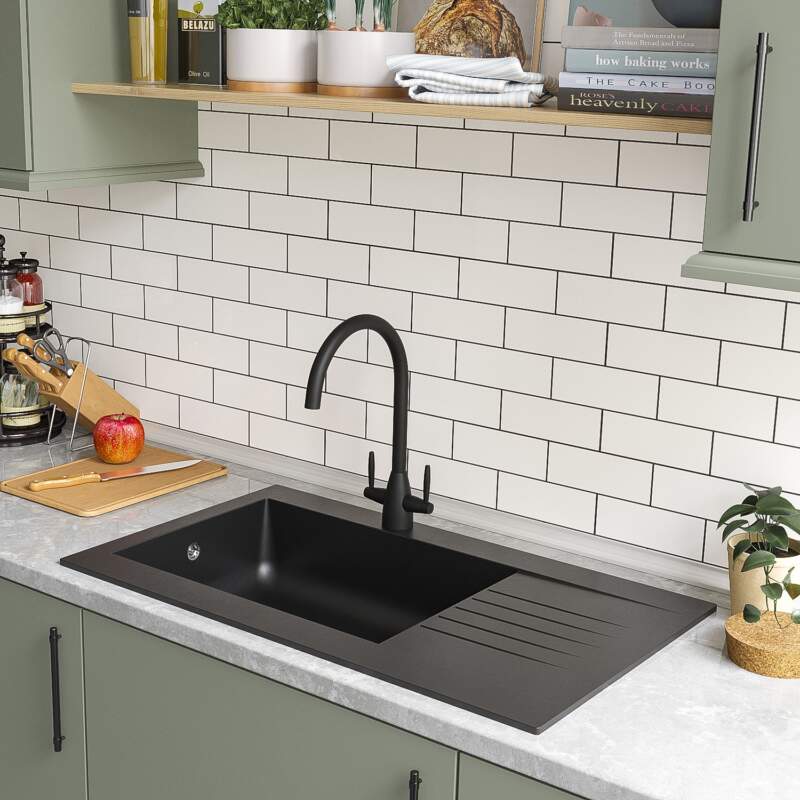In our quest for the perfect kitchen or bathroom, we often find ourselves in trouble between aesthetics and practicality. One of the key choices we face is selecting the right sink. Regarding kitchen decor, the choice of sink color plays a crucial role. Black sinks exude a sense of sophistication and modernity, making them an attractive choice for contemporary kitchen designs. However, like any design choice, there are disadvantages associated with a black sink that you should consider before taking the plunge. We will answer all your queries related to Black Sink.
Why do black sinks go white?
Black sinks turning white is not a natural or typical occurrence. Sinks can change color or appearance for various reasons, but it’s more likely that something is causing the black sink to appear white, rather than the sink itself changing color.
Possible reasons for a black sink appearing white include:
- Mineral Deposits: Over time, mineral deposits from hard water can accumulate on the surface of a sink, which may give it a white or cloudy appearance. These deposits can be cleaned with a mixture of water and vinegar or a mild abrasive cleaner.
- Residue Buildup: If you’re not regularly cleaning your sink, soap scum, food residue, or cleaning product residue can build up and change the sink’s appearance. Regular cleaning can prevent this.
- Scratches or Damage: Scratches or damage to the sink’s surface can alter its appearance. If the black surface is scratched or chipped, it may reveal the lighter material underneath, giving it a white appearance.
- Chemical Reactions: Exposure to certain chemicals or harsh cleaning agents might react with the sink’s finish or materials, leading to changes in color or surface appearance.
- Manufacturing Issues: In some rare cases, a sink with a poor-quality finish may degrade or discolor over time, making it appear different from its original color.
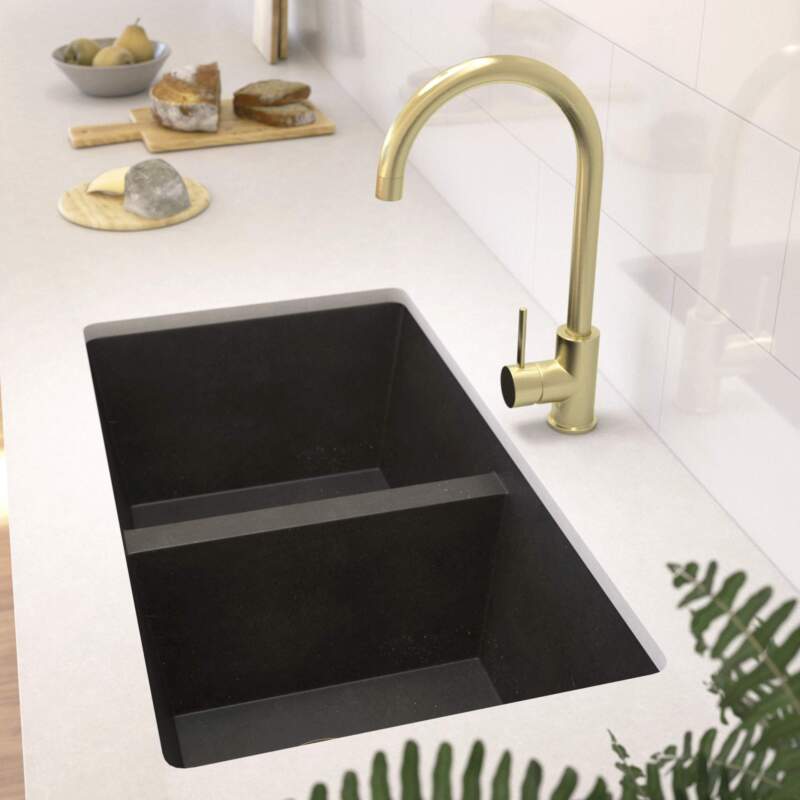
Is a black sink hard to keep clean?
Black sinks can be more challenging to keep clean compared to sinks in lighter colors because they tend to show water spots, soap scum, and food stains more prominently. The dark surface can make any residue or marks more visible. However, with proper care and cleaning, it is possible to maintain a black sink’s appearance.
- Regular Cleaning
- Avoid Harsh Cleaners
- Rinse Thoroughly
- Dry After Use
- Baking Soda and Vinegar
- Avoid Dark-Colored Stains
- Sink Grid or Mat
- Regular Maintenance
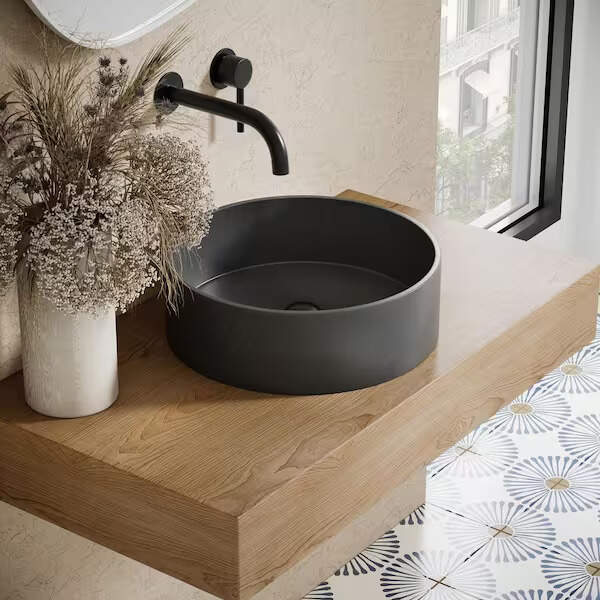
Is it good to have a black sink?
it’s essential to appreciate the aesthetic appeal of a black sink. Black sinks have gained immense popularity in recent years due to their sleek and modern design. They exude a sense of sophistication and can be a stunning focal point in any kitchen or bathroom.
Do black sinks get water stains?
Yes, black sinks can develop water stains, but it’s important to clarify what these stains actually are. Water stains on black sinks are typically caused by mineral deposits, which are more noticeable on dark surfaces. These mineral deposits come from the minerals naturally present in your tap water, such as calcium and magnesium.
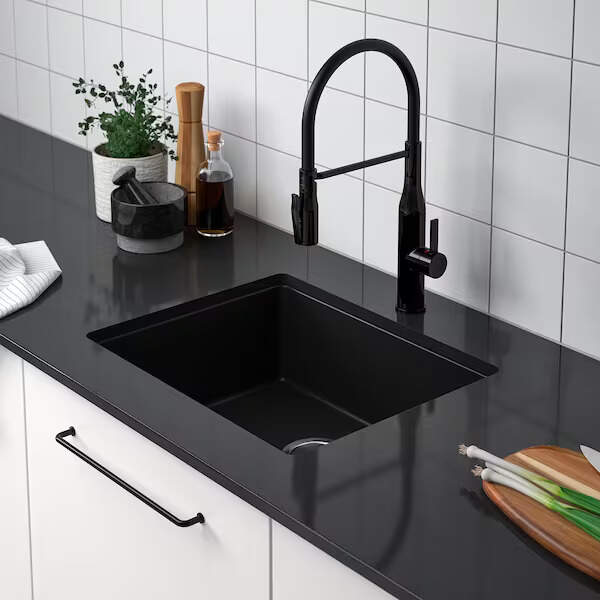
Do black sinks scratch easy?
Black sinks can be more prone to showing scratches compared to sinks in lighter colors due to the contrast between the dark surface and the underlying material. The extent to which a black sink scratches easily depends on several factors, including the sink’s material and the hardness of the objects coming into contact with it.
Here are some factors to consider regarding the susceptibility of black sinks to scratches:
- Material: The material of the sink plays a significant role in how easily it can scratch. Common materials for black sinks include granite composite, enamel-coated cast iron, and stainless steel with a black finish. Granite composite sinks are generally more scratch-resistant than enamel-coated cast iron sinks.
- Usage: The likelihood of scratching depends on how the sink is used. Rough handling, dropping heavy objects, or using abrasive cleaning tools can lead to scratches. Cutting directly on the sink’s surface is also likely to cause scratches.
- Sink Coating: Some black sinks have a protective coating or finish to enhance their durability and resistance to scratches. However, over time, this coating can wear down, making the sink more susceptible to scratches.
To minimize scratches and maintain the appearance of a black sink, follow these tips:
- Avoid cutting or chopping food directly on the sink’s surface.
- Use a sink grid or mat to protect the sink from sharp objects and heavy cookware.
- Be mindful of how you handle dishes and utensils to avoid accidental impacts.
- Use non-abrasive, sink-friendly cleaning tools and gentle cleaning products.
- Periodically inspect the sink for any signs of wear or damage and address them promptly.
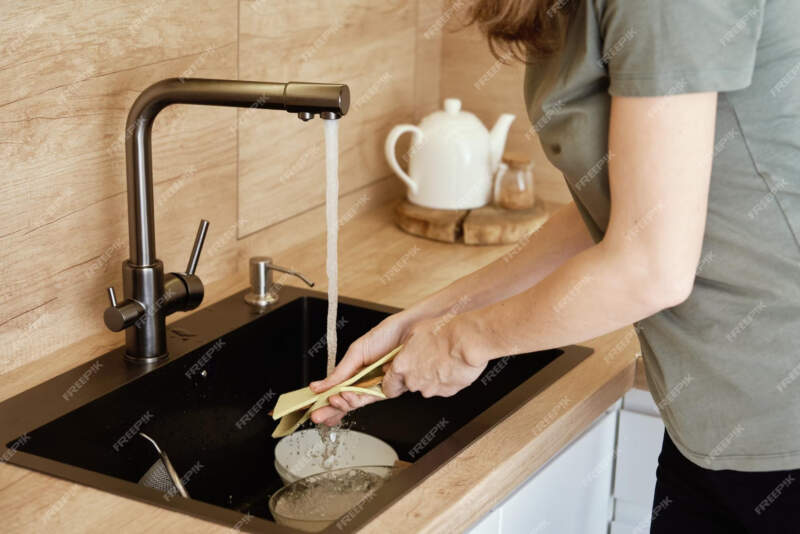
What are the disadvantages of a black kitchen?
While a black kitchen can be visually striking and elegant, it also comes with certain disadvantages and considerations. Here are some potential drawbacks of having a black kitchen:
- Light Absorption: Black absorbs light, so a predominantly black kitchen can make the space feel smaller and darker, especially if it lacks sufficient natural light. It may not be the best choice for smaller kitchens or spaces with limited lighting.
- Dust and Stains: Black surfaces are more likely to show dust, fingerprints, and water stains, which can require frequent cleaning to maintain a pristine appearance.
- Scratches and Wear: Black surfaces can show scratches and wear more prominently compared to lighter colors. This is especially true for black countertops, sinks, or appliances.
- Heat Absorption: Black materials can absorb heat, making the kitchen warmer, which might not be ideal in hot climates. It can also cause black appliances to feel warm to the touch.
- Aesthetic Sensitivity: Black kitchens require a careful choice of color schemes and decor to avoid an overly monochromatic or stark appearance. Design choices need to be thoughtfully balanced.
- Expense: High-quality black materials or finishes, such as black granite or custom cabinetry, can be more expensive than their standard counterparts.
- Limited Versatility: A black kitchen can be less versatile in terms of design, as it might not easily adapt to changing trends or personal preferences. It can be challenging to update without significant investment.
- Maintenance: Regular cleaning is necessary to keep black surfaces looking pristine, and it can be more labor-intensive than maintaining lighter colors.
- Psychological Impact: The color black can have a psychological effect, potentially evoking feelings of seriousness or formality. It might not create as warm and inviting a kitchen atmosphere as other colors.
- Resale Value: Some potential buyers might be deterred by an all-black kitchen, as it doesn’t appeal to everyone’s taste. This could affect the resale value of your home.

How do I keep my black sink black?
Despite these disadvantages, a black kitchen can be a stunning and stylish choice when designed and maintained with care.
To maintain the black color and appearance of your black sink, follow these steps for proper care and cleaning:
- Regular Cleaning: Clean your sink daily or after each use with mild dish soap and warm water. This helps prevent the buildup of residue and maintains its black finish.
- Avoid Harsh Cleaners: Avoid abrasive or harsh chemical cleaners, as they can damage the sink’s finish. Instead, use gentle, non-abrasive cleaners specifically designed for sinks.
- Rinse Thoroughly: After each use, rinse the sink thoroughly to remove any food particles, soap, or other residues. This helps prevent stains and buildup.
- Dry After Use: Wipe the sink dry with a clean, soft cloth or paper towel after each use. This helps prevent water spots and keeps the sink looking clean.
- Baking Soda and Vinegar: Periodically, use a paste of baking soda and water to gently scrub the sink. Rinse it thoroughly and wipe it dry. You can also use a mixture of water and vinegar to remove mineral deposits.
- Sink Grid or Mat: Consider using a sink grid or mat at the bottom of the sink to protect it from scratches and stains.
- Regular Maintenance: Periodically inspect the sink for any scratches, damage, or signs of wear.
- Avoid Dark-Colored Stains: Be cautious when using dark-colored or strongly pigmented foods or liquids in the sink, as they can potentially leave stains. Rinse or wipe the sink immediately after contact with such substances.
By following these steps and maintaining your black sink with care, you can keep it looking black and elegant for years to come. Regular cleaning and preventative measures are essential to ensure its longevity and aesthetic appeal.


